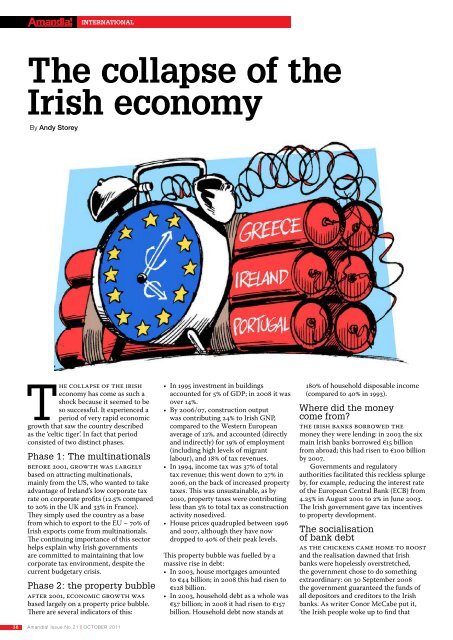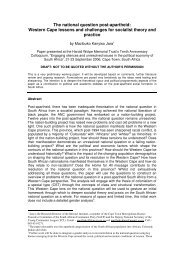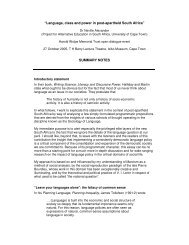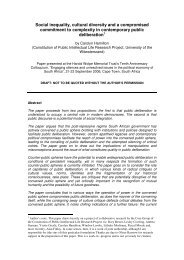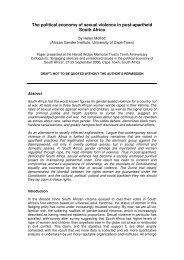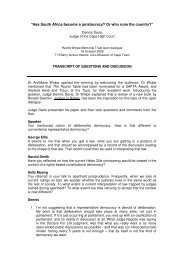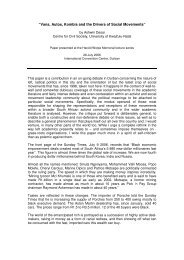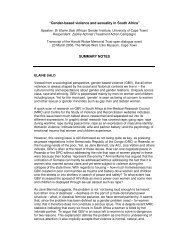internationalThe collapse of theIrish economyBy Andy StoreyThe collapse of the Irisheconomy has come as such ashock because it seemed to beso successful. It experienced aperiod of very rapid economicgrowth that saw the country describedas the ‘celtic tiger’. In fact that periodconsisted of two distinct phases.Phase 1: The multinationalsBefore 2001, growth was largelybased on attracting multinationals,mainly from the US, who wanted to takeadvantage of Ireland’s low corporate taxrate on corporate profits (12.5% comparedto 20% in the UK and 33% in France).They simply used the country as a basefrom which to export to the EU – 70% ofIrish exports come from multinationals.The continuing importance of this sectorhelps explain why Irish governmentsare committed to maintaining that lowcorporate tax environment, despite thecurrent budgetary crisis.Phase 2: the property bubbleAfter 2001, economic growth wasbased largely on a property price bubble.T<strong>here</strong> are several indicators of this:• In 1995 investment in buildingsaccounted for 5% of GDP; in 2008 it wasover 14%.• By 2006/07, construction outputwas contributing 24% to Irish GNP,compared to the Western Europeanaverage of 12%, and accounted (directlyand indirectly) for 19% of employment(including high levels of migrantlabour), and 18% of tax revenues.• In 1994, income tax was 37% of totaltax revenue; this went down to 27% in2006, on the back of increased propertytaxes. This was unsustainable, as by2010, property taxes were contributingless than 3% to total tax as constructionactivity nosedived.• House prices quadrupled between 1996and 2007, although they have nowdropped to 40% of their peak levels.This property bubble was fuelled by amassive rise in debt:• In 2003, house mortgages amountedto €44 billion; in 2008 this had risen to€128 billion.• In 2003, household debt as a whole was€57 billion; in 2008 it had risen to €157billion. Household debt now stands at180% of household disposable income(compared to 40% in 1993).W<strong>here</strong> did the moneycome from?The Irish banks borrowed themoney they were lending: in 2003 the sixmain Irish banks borrowed €15 billionfrom abroad; this had risen to €100 billionby 2007.Governments and regulatoryauthorities facilitated this reckless splurgeby, for example, reducing the interest rateof the European Central Bank (ECB) from4.25% in August 2001 to 2% in June 2003.The Irish government gave tax incentivesto property development.The socialisationof bank debtAs the chickens came home to roostand the realisation dawned that Irishbanks were hopelessly overstretched,the government chose to do somethingextraordinary: on 30 September 2008the government guaranteed the funds ofall depositors and creditors to the Irishbanks. As writer Conor McCabe put it,‘the Irish people woke up to find that36 <strong>Amandla</strong>! Issue No.21 | OCTOBER 2011
internationalThe Irish bail out is coming out of ordinary citizens’ pockets: taxpayers and consumers of services will lose, notprivate owners of capital.the … government had put up the entireIrish State as collateral for the crushingliabilities of six private banks. The countrywas now liable for approximately €400billion [probably more] in leveraged loansin a recession, while sitting on top of aslowly deflating property bubble’.The total cost of bailing out the banksis now estimated to be €70 billion, andthis may be optimistic as various otherbills may yet be presented for payment.Two thirds of the Irish government deficit(32% of GDP) in 2010 was accounted forby public money given to the banks andtheir creditors.The people payAnd this money is coming fromordinary citizens. The Irish state hasadjusted its budget by more than €20billion. Economist Karl Whelan describesthe cost of this as ‘the equivalent of… €4,600 per person … the largestbudgetary adjustments seen anyw<strong>here</strong> inthe advanced economic world in moderntimes’.This budgetary adjustment hasbeen achieved by spending cuts and taxincreases, and these will continue:• In 2011 t<strong>here</strong> will be a further €6 billionof spending cuts and tax increases.• In 2012 that figure will be €3.6 billionfor 2012 and, on average, €3 billion foreach of 2013 and 2014.Not surprisingly, these policies aresending the economy into a tailspin: GNPis already down over 15% from its peaklevel. The policies will continue, as theIMF and the EU loaned €58 billion oncondition that austerity measures mustbe continued. Ireland could no longerborrow at affordable rates from privatefinancial markets.The government bailsout the investorsAnd this is not the ‘bailout’ ofIreland, as it is usually referred to. In fact,it is a bail out of the European investors:foolish enough to lend to … insolvent[Irish] banks, courtesy of the Irishtaxpayers. The markets havingdeclined to finance this commitmenton top of the Irish sovereign debt,our European friends have kindlyprovided ‘assistance’ in the form ofloans at a mark-up of three per cent[so that money can be] routed fromIrish taxpayers to European privatecreditors of Irish private banks. Indeed,a substantial portion has alreadybeen paid over, to be replaced withsovereign debt.Irish taxpayers are suffering in orderto pay the private creditors of Irish banks.And the price they are paying is very high:• Unemployment stands at over 14%,almost half a million people.• Emigration has been estimated at70 000 in year ending April 2010 and50 000 in year ending April 2011.• The economy is mired in recession, withinvestment down from over €48 billionin each of 2006 and 2007 to a little over€18 billion in 2010.Capital, as sociologist Kieran Allenputs it, has gone on strike.Meanwhile, Irish banks are highlydependent on loans (distinct from the‘bail out’) of over €150 billion from theECB and the Irish Central Bank as bankdeposits fall steadily:• The debt–GDP ratio stood at 90%in 2010 (It would have been 110% ifNAMA borrowing had been counted)and is expected to rise to 120% in 2013and perhaps 145% by 2014.• The final debt bill may be €250billion, more than €120,000 per Irishworker and 60% larger than Irishnational income.Private capital is paid firstThis money cannot possibly berepaid in full – a default is inevitable.But, and this is the elite’s game plan,the default will only happen once thebondholders have been paid off. As muchas possible of the debt will be socialised(transferred to the Irish taxpayer) beforeit is repudiated. This is the simple logicof what is happening in Ireland (andin Greece and Portugal, and probablysoon in other countries also). Taxpayersand consumers of services will lose, notprivate owners of capital. It seems thatcapitalist governments are happy tonationalise debt, if nothing else.In addition, the government is usingthe excuse of the crisis to drive throughother policies that likewise benefit thecorporate sector, such as reducing rates ofpay for already low paid workers.Fighting back?In the face of this appalling andglaring injustice, what are the Irish peopledoing? Sadly, not enough. T<strong>here</strong> havebeen well-attended protest marches,but, for example, in 2009 only 0.1% of allIrish workers were involved in industrialdisputes. Why the relative inaction? T<strong>here</strong>is a range of answers to this question, buttwo probably stand out. The first is thatpeople invested huge hope in the electionof February 2011, believing that a changeof government would lead to a change ofpolicies, but instead the new governmentcontinued the same programme ofausterity and bank bailouts. A second isthe quiescent and cowardly attitude of thetrade union leadership, which maintains acosy relationship with government and anaversion to militant protest.But all is not doom and gloom. The2011 election did not deliver the policychange the electors anticipated, but it diddeliver the election of a sizeable numberof left-wing members of parliament anda rise in electoral support for left-leaningSinn Fein – the total left vote may haveexceeded 20%, which is very high byIrish standards. T<strong>here</strong> are also variouscitizens’ initiatives emerging, includinglocal ‘burn the bondholders’ protestsand the initiation of a ‘debt audit’ to helpdetermine the legitimacy (or lack of it) ofthe debt. We may not yet have seen Irishpeople take to the streets as in Greeceand Spain, but the anger is growing, as is,hopefully, the appetite for action.Dr Andy Storey is a lecturer at the school ofpolitics and international relations of the Universityof Dublin and chairperson of the NGO Action fromIreland (www.afri.ie).<strong>Amandla</strong>! Issue No.21 | OCTOBER 2011 37


